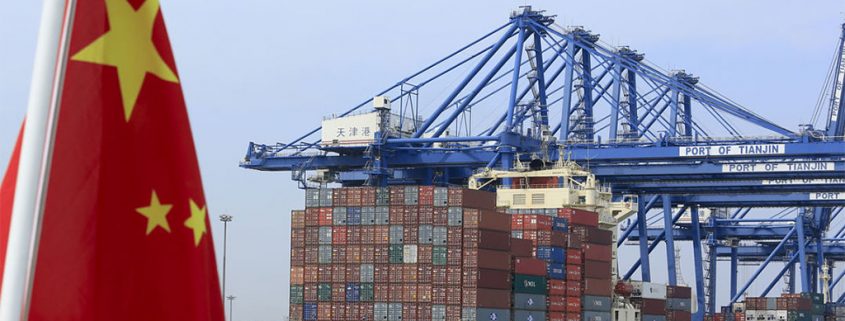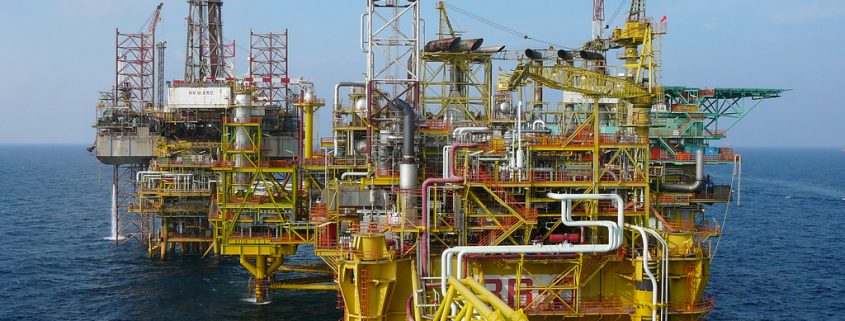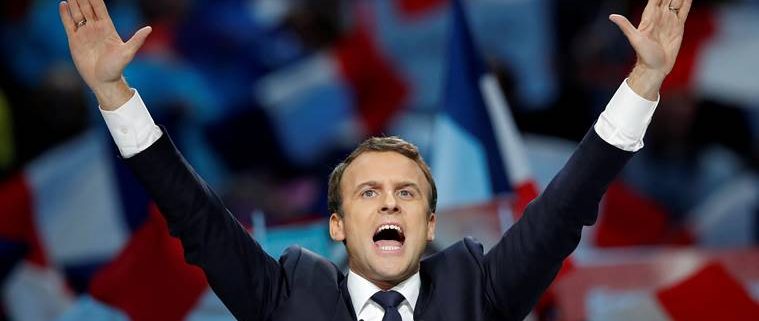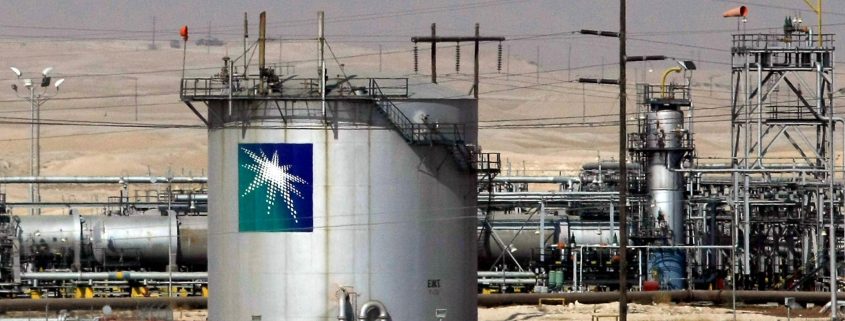Import of Commodities in China gaining way more realistic levels
Serving as a notice that strong gains can’t last forever and also as a warning that demand is declining in the world’s largest importer of the resources…
 Brisk falls in April imports of crude oil, iron ore and copper ore are the real warning that commodity-intensive sectors might be losing some momentum. For example construction and manufacturing, which take the big part of stake in China’s economy.
Brisk falls in April imports of crude oil, iron ore and copper ore are the real warning that commodity-intensive sectors might be losing some momentum. For example construction and manufacturing, which take the big part of stake in China’s economy.
Nevertheless, there are some short-term factors that can help explaining the declines. It is still way too early, for calling an end to the trend of forceful demand for commodities in the world’s second-largest economy.
Noteworthy, having in mind China’s Oil Sector: The impact of domestic policy respects in China, paying attention to many of the smaller, private refiners. They are believed to have almost exhausted their first quarter crude import quotas.
Second quarter will bring some more moderate import structures. Before 2H17 and the easy recovery of the sector.
Exports
Observing exports of refined fuels.. It fell 25.1 percent in April from March, tumbling to 3.5 million tonnes. (930,000 bpd.)
This lowered the growth rate of refined fuel exports to 15 percent, which is rather down from 22.6 percent in the first quarter of the previous year.
Caused by Weather
Iron ore imports plummeted 13.9 percent in April. Almost to 82.23 million tonnes, which makes it the lowest monthly total since October.
April’s imports were also hit by weather-related disruptions in the main exporting region of northwest Australia during March. When many of the cargoes were loading.
Lower iron cost ore from Australia and Brazil will oust domestic supplies. And would in a way serve to boost China’s imports.
The spot price fell to $60.15 a tonne on Monday. Which is down 37 percent from the recent peak of $94.86 on Feb. 21.
Coal
Coal imports should have also been hit by weather in Australia, but instead they rose by 12.2 percent from March to 24.78 million tonnes. Taking the year-to-date gain to 33.2 percent.
It’s possible that China boosted imports via rail and truck from neighboring Mongolia.
Coal imports will mostly remain strong, given the current cost advantage their enjoy over domestic supplies. These have been somewhat constrained by Beijing’s efforts to eliminate over-capacity and inefficient mines.
Copper grief
Firstly, imports of unwrought copper dropped 30.2 percent to 300,000 tonnes in April from March. When compared to the same period of previous year it is 33.2 % down.
 By now, it was possible to make the argument that China was replacing imports of refined metal with ores and concentrates. But paying further attention, they also plummeted in April.
By now, it was possible to make the argument that China was replacing imports of refined metal with ores and concentrates. But paying further attention, they also plummeted in April.
Secondly, imports of ores and concentrates dropped 16.6 percent from March to 1.36 million tonnes. Which is showing a lack of appetite among China’s copper smelters for imported ore.
Thirdly, copper is often viewed as the canary in the commodity coal mine. And also the continuous downturn in China’s imports would mostly raise the market’s level of worries.
In conclusion, China’s April commodity imports represent a return to what might be described as more normal, stabile levels. Which came after a few months of outsized and unsustainable growth, who seemed a bit like a fairytale.





 He wrote in a book in January which says South Korea should learn to say “no to America”.
He wrote in a book in January which says South Korea should learn to say “no to America”.


 Many years Japanese top five trading houses were trying to change their businesses. In order to try diversifying their work into non-cyclical. But after long period of time they have confirmed and underlined the vulnerability and sensitiveness of their businesses. Because they still operate in ”the world of commodities”.
Many years Japanese top five trading houses were trying to change their businesses. In order to try diversifying their work into non-cyclical. But after long period of time they have confirmed and underlined the vulnerability and sensitiveness of their businesses. Because they still operate in ”the world of commodities”.



 import data from China. These data showed total copper imports into the Asian nation fell. And they fell to their lowest level since October 2016. China’s total copper imports for April fell 33% year-on-year to 300,000 tonnes. Making them down from 450,000 tonnes in the same month last year.
import data from China. These data showed total copper imports into the Asian nation fell. And they fell to their lowest level since October 2016. China’s total copper imports for April fell 33% year-on-year to 300,000 tonnes. Making them down from 450,000 tonnes in the same month last year. “Nickel prices have been under pressure throughout April. This increased market participants’ appetite for dip-buying. Specially on top of which, nickel’s output was largely reduced in April.”
“Nickel prices have been under pressure throughout April. This increased market participants’ appetite for dip-buying. Specially on top of which, nickel’s output was largely reduced in April.”

 Over the weekend, Chinese imports of unwrought copper and copper-fabricated products fell 4.4% year-on-year in April. Following, total imports for the first four months of 2017 were down 22.9% compared to the same period of last year. Generally, total imports in the first four months of 2017 of 1.88 million tonnes were down 22.9% year-on-year.
Over the weekend, Chinese imports of unwrought copper and copper-fabricated products fell 4.4% year-on-year in April. Following, total imports for the first four months of 2017 were down 22.9% compared to the same period of last year. Generally, total imports in the first four months of 2017 of 1.88 million tonnes were down 22.9% year-on-year.
 came in at 238,000. It is the amount below the forecast of 246,000. Thirdly, preliminary non-farm productivity and unit labour costs during the first quarter came in at -0.6% and 3%, respectively.
came in at 238,000. It is the amount below the forecast of 246,000. Thirdly, preliminary non-farm productivity and unit labour costs during the first quarter came in at -0.6% and 3%, respectively.





 “The fall down in SHFE copper stocks was happening due to the dip-buying from consumers. Anyway, as the copper price continued to hover at a low level. This made market participants show doubts as to whether the real demand could support the expanding inventories within consumers.” ( analyst from Guotai Jun’an)
“The fall down in SHFE copper stocks was happening due to the dip-buying from consumers. Anyway, as the copper price continued to hover at a low level. This made market participants show doubts as to whether the real demand could support the expanding inventories within consumers.” ( analyst from Guotai Jun’an) “Aluminium is still consolidating after recent price jumps. Moreover, the market might be waiting in anticipation [of better prices] following aluminium supply-side reforms [in China. However, chances are that the actual deficit might not be as large as people expect.”
“Aluminium is still consolidating after recent price jumps. Moreover, the market might be waiting in anticipation [of better prices] following aluminium supply-side reforms [in China. However, chances are that the actual deficit might not be as large as people expect.”








 The three-month copper price saw a small decline of $2.50 to $5,540.50 per tonne. Copper did hit highs of $5,591 earlier in the say as it looked to consolidate after a $202 per tonne drops earlier in the week. Copper inventories rose a net 36,800 tonnes to 354,650 tonnes – the highest since October 2016. This follows rises of 32,925 tonnes yesterday and 31,250 tonnes on Wednesday. In supply news, Anglo American is taking steps to restart operations promptly at its El Soldado copper mine in Chile.
The three-month copper price saw a small decline of $2.50 to $5,540.50 per tonne. Copper did hit highs of $5,591 earlier in the say as it looked to consolidate after a $202 per tonne drops earlier in the week. Copper inventories rose a net 36,800 tonnes to 354,650 tonnes – the highest since October 2016. This follows rises of 32,925 tonnes yesterday and 31,250 tonnes on Wednesday. In supply news, Anglo American is taking steps to restart operations promptly at its El Soldado copper mine in Chile.